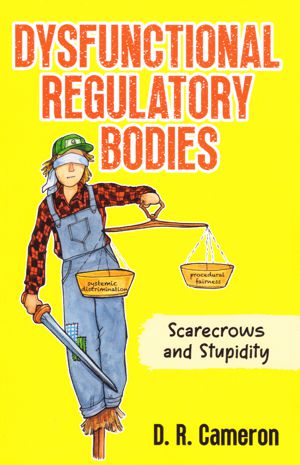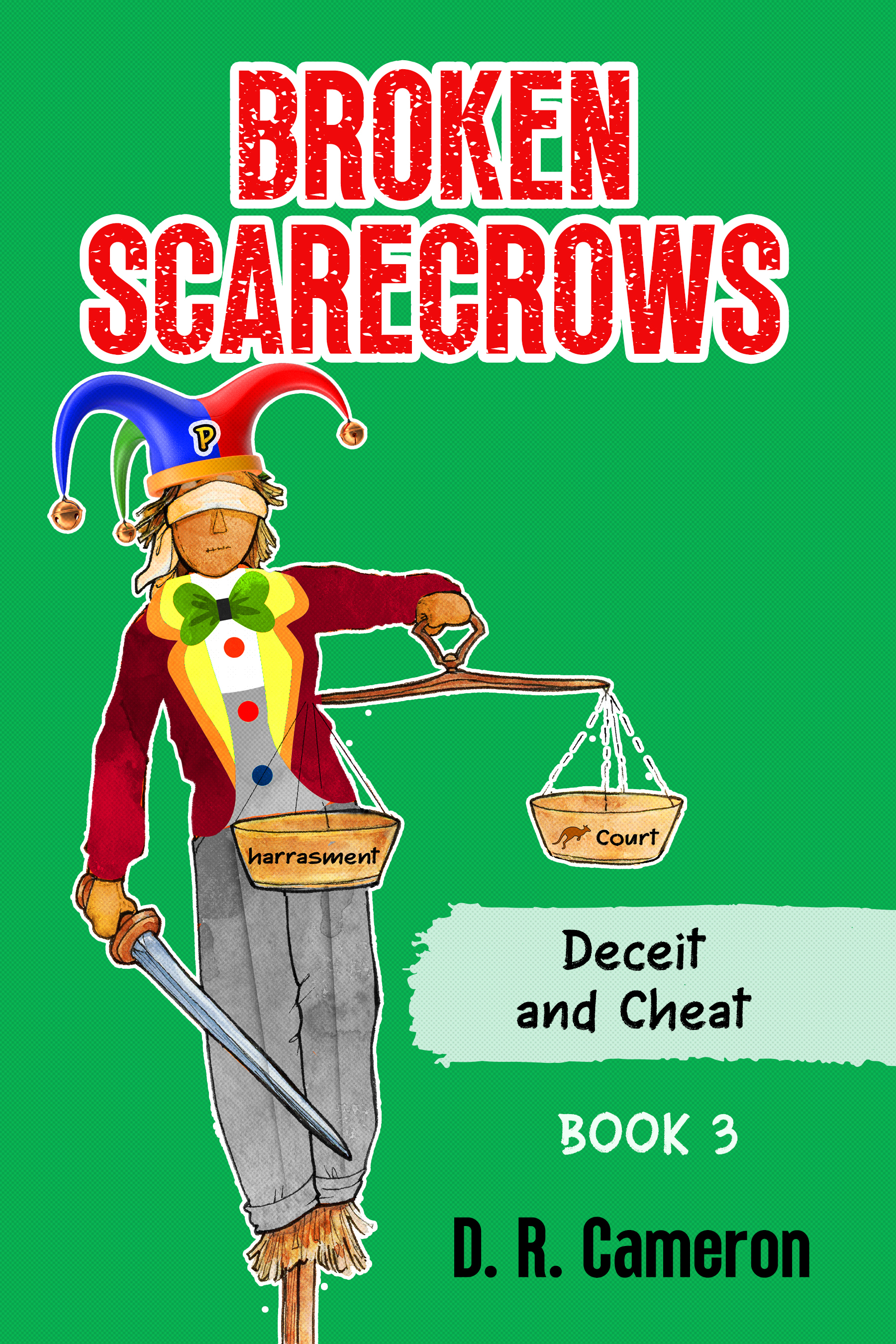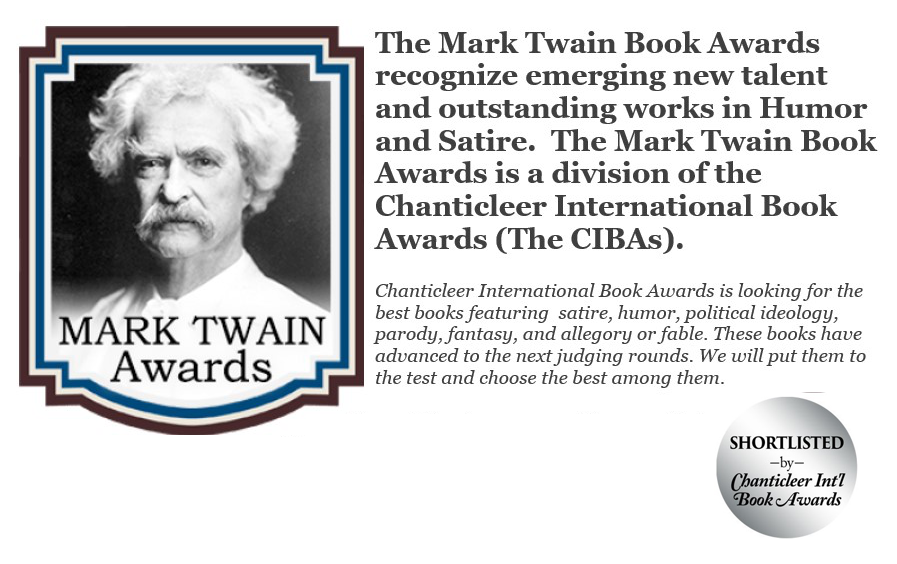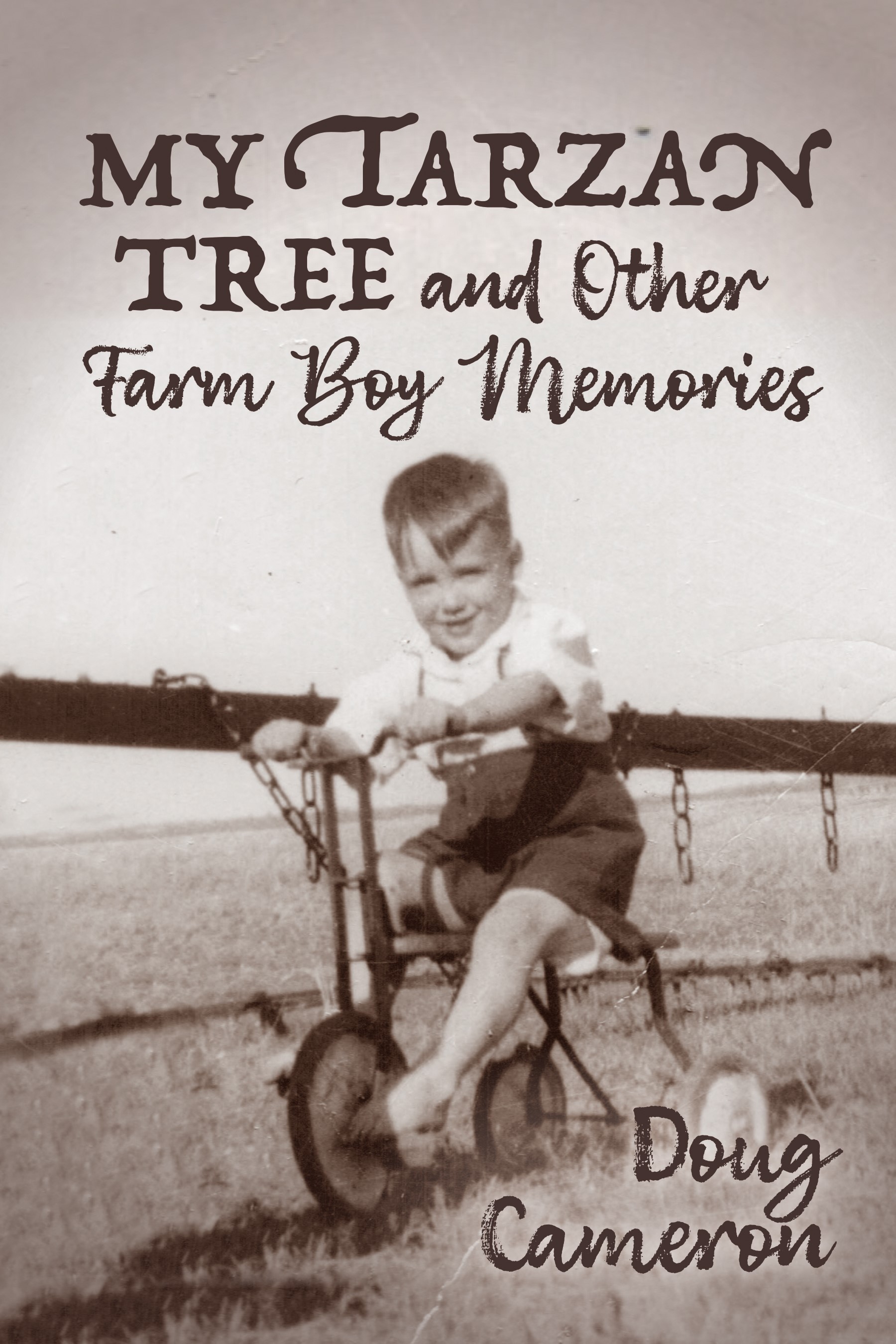Doug Cameron

Dysfunctional Regulatory Bodies - Scarecrows and Stupidity

Dysfunctional Regulatory Bodies - Cowpies and Lies

Broken Scarecrows - Deceit and Cheat

About the Author

I grew up in small-town Saskatchewan and thus am familiar with folks who congregate daily at “coffee row” to remember the good old days, tell amusing stories, share gossip and passionately discuss current events. I continually thought about coffee row while reading Swift Current-area writer Doug Cameron’s memoir, My Tarzan Tree and Other Farm Boy Memories.
This 1945-born author is obviously a storyteller at heart, but more than that, he’s done what many people talk about doing—writing a book about their life—but few accomplish. Cameron’s light and informal tone; the emphasis on his rural upbringing (near Alcomdale, Alberta); and rambling reminiscences of boyhood escapades with eight siblings, cousins, and friends reads like coffee row conversation: I could even imagine Cameron’s coffee mates nodding in recognition as they stirred another spoonful of sugar into their coffee cups.
Cameron, who had a significant career in agricultural science (he was employed at Ottawa’s Agriculture Canada Research Station, and worked globally), has culled his varied childhood experiences into an easy and pleasurable read. He says that he’s “always wanted to write about [his] boyhood days as a toddler to a teen growing up on [their] farm,” and now that he’s “getting long in the tooth,” it was time to do it. The fact that he “loved writing this book,” shines through the short chapters, which include occasional black and white illustrations and maps.
The nearly 300-page book begins with the author’s earliest childhood memories, ie: playing with toy soldiers, and slowly becoming aware that he lived on a farm, complete with dogs and “oodles of elusive cats,” chickens, cows, horses, pigs and turkeys. This was back when chamber pots were in use, teachers gave students “the strap,” and everyone bathed in a galvanized steel tub on Saturday night. For Cameron, money was earned by picking bottles and picking rocks: the kids’ father paid a penny “for a pail and ten cents for a pile.” In those days, ten cents could buy a “box of Cracker Jack popcorn (with a prize inside), one large O’Henry chocolate bar, five licorice pipes, or, best of all, 30 jaw breakers.” Several food memories are shared, from church picnics and fall threshing meals to pilfered apples: “—there is nothing like the taste of stolen apples,” Cameron writes. He goes into detail about the type of candy cane in his Christmas stocking (“There would always be one peppermint candy cane with the barber pole stripes of red and white. Sometimes green got in the mix.”), and describes his first vanilla milkshake so well, it made me long for one.
Cameron presents a rosy picture of his childhood within a large rural family, including a home life filled with chores; church and community activities; school days; hobbies and sports. “We didn’t go hungry,” he writes, “and there was lots of love.”
Readers, if you recall playing “Kick the Can,” skating on sloughs, and making cattail torches, you’ll probably see some of your history in these merry personal tales.
THIS BOOK IS AVAILABLE AT YOUR LOCAL BOOKSTORE OR FROM WWW.SKBOOKS.COM
Where to Buy:
All books are $25
Amazon—they will add postage, unless you have Prime
Doug Cameron—email at normac@sasktel.net I would love to hear from you.
SaskBooks, Regina
Yellow Canary Bookstore, Gull Lake
Contact Me
Email me at normac@sasktel.net
